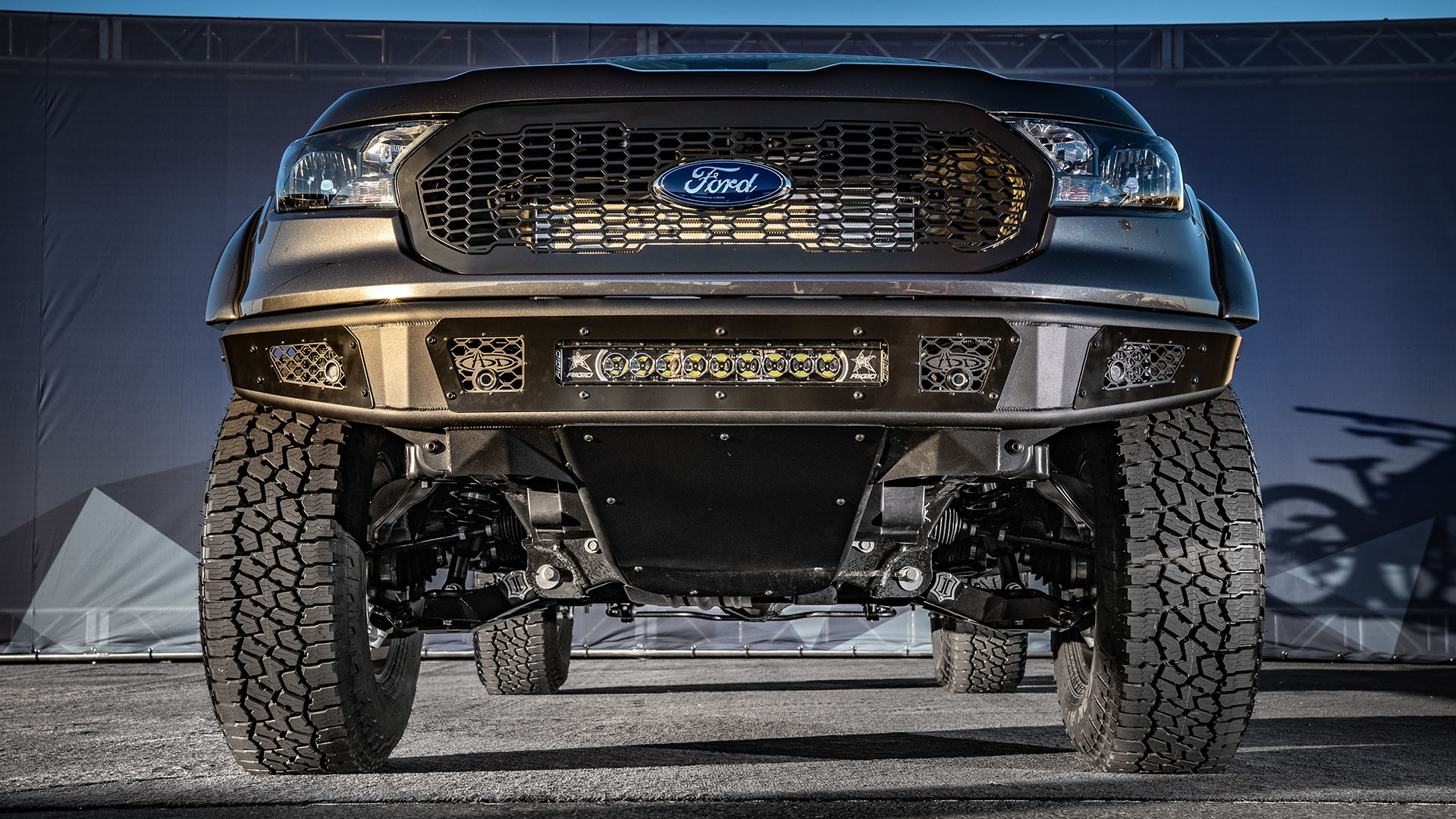

We may earn revenue from the products available on this page and participate in affiliate programs. Learn more ›
To the uninitiated, a peek underneath a car might as well look like steel cobwebs. This doohicky is connected to that whatchamacallit, which goes through this little curly cue and pairs to that other dinglehopper, which bolts onto another that (furiously points at the engine bay), all of which are intertwined with wires and rubber. And that’s just the front!
Underneath, a car’s suspension uses several different components to accomplish its complicated task of delivering the perfect ride. Some are tuned and designed to make the drive more comfortable, others can better a car’s performance, and some do both. One such component is the sway bar, also known as an anti-roll bar. And although certain older vehicles lack this feature, most modern vehicles will have front sway bars, and sometimes rear sway bars.
These parts, which somewhat resemble curl bars from the gym, are ripe for upgrades, but your car might not necessarily need one. Let The Drive’s flat-footed editors teach you the basics of how sway bars work, why cars have them, and whether or not you need to upgrade yours.
What Is a Sway Bar?
A sway bar is a tubular piece of shaped metal that connects the left and right sides of a car’s suspension and resists torsion—the twisting force put upon a car’s chassis when you enter a corner. They are generally U-shaped from end to end, but they often have numerous other kinks and curves due to fitment and design. Sway bars are also known as anti-roll bars, anti-sway bars, stabilizer bars, or stability bars.

What Is a Sway Bar Link?
Sway bar links are pieces of equipment on the ends of the sway bar that attach the sway bar to the suspension.
What Is a Sway Bar Bushing?
Sway bar bushings help keep the stabilizer bar in place and close the vehicle. They also absorb some of the energy taken on by the bar.
Why Use a Sway Bar?
Sway bars improve a car’s handling around turns and corners by controlling the vehicle’s weight transfer, including body roll. By working to keep the wheels on each side of the car as even as possible, they help keep the car more planted and maintain a strong contact patch between the tires and the ground.
How Does a Sway Bar Work?
When you take a corner, your car has the natural inclination to want to tip over to the opposite side, it’s the simple result of physics. Car suspensions have been developed and designed to eliminate a great deal of this reaction to keep your ride safe and planted, with sway bars playing crucial roles in accomplishing this task.
To put this into real-world context, when you turn right, the car’s body rolls left and loads the suspension on the left side. When this occurs, the sway bar is designed to twist on its axis. Its resistance to this twisting is what helps keep the car planted and improve cornering. The video below demonstrates how this works.

What’s The Difference Between Stock and Aftermarket Sway Bars?
The primary differences between stock sway bars and aftermarket sway bars are stiffness, weight, and adjustability. Aftermarket sway bars are often lighter, stiffer, and feature a wider range of adjustment.
Should You Upgrade Your Sway Bars?
That’s completely up to you. Stiffer sway bars are particularly useful for performance vehicles or vehicles that carry or tow loads, but anybody can upgrade their ride if sway bars give them what they believe is a better driving experience.
Not all upgrades will be beneficial, however. Increasing the stiffness of your sway bars on a stock daily driver could make the experience worse.

FAQs About Sway Bar
You’ve got questions, The Drive has answers!
A. You most likely have issues with the bushings or with the sway bar links. You might hear clunks, squeaks, rubbing sounds, or knocking noises. You also might notice a difference in driving feel when you’re cornering or experience a level of vibrations. These symptoms, however, are not exclusive to bad sway bars and could be the result of other faulty suspension equipment.
A. The vehicle will drive, even with faulty sway bar parts, but you might be creating an unsafe situation by doing so. If you are aware that any part of your sway bar is bad, and your vehicle is designed to drive with one, then you should replace it as soon as possible.
A. Sway bar kits can range from less than $200 to thousands of dollars. It all depends on what your vehicle is, what brand you buy, and how high quality you’re going.
A. Several things can break a sway bar down, including hard impacts, hard driving, normal wear and tear, and physical damage.
Let’s Talk, Comment Below To Talk With The Drive’s Editors!
We’re here to be expert guides in everything How-To related. Use us, compliment us, yell at us. Comment below and let’s talk! You can also shout at us on Twitter or Instagram, here are our profiles.
Jonathon Klein: Twitter (@jonathon.klein), Instagram (@jonathon_klein)
Tony Markovich: Twitter (@T_Marko), Instagram (@t_marko)
Chris Teague: Twitter (@TeagueDrives), Instagram (@TeagueDrives)
Featured Products
Prothane Red 34 mm Front Sway Bar Bushing Kit
Moog Sway Bar Bushing Kit, Regular
Got a question? Got a pro tip? Send us a note: guidesandgear@thedrive.com